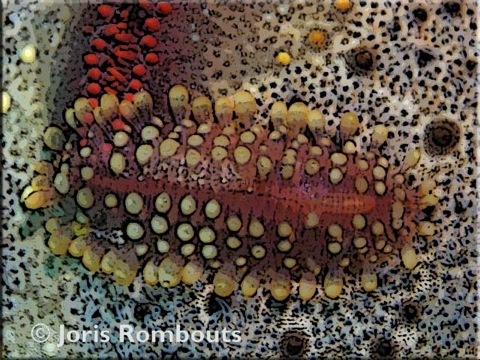
- Check the sub-map for the specimen information files -
WORMS
Worms or polychaetes are divided into two major subclasses: the sedentary worm (Sedentaria) and the free-moving worm (Errantia). All have repetitious body segments and each of the segments have separate but essentially similar systems – a pair of paropods (side feet) that can be used for locomotion. Free-moving worms also have gills. The most commonly known, "bristleworms", also called fireworms, have a hidden danger. They’ve white bristles or setae on their paropods. These are poisonous and can cause a burning pain if contact is made with bare skin. Sedentary polychates live permanently in a tube. Probably the most recognised are the beautiful colored "christmas tree" worms. These particle feeders have a filtering mechanism called the radiole. Each branch (pinnule) of the radiole is lined with tiny hairs (cilia) that catch plankton and other particles out of the water and transfer it to their mouth. The radiole also have eyespots which warn the tubeworm of shadows and other potential dangers. This is why when divers or snorkelers go to have a close look they disappear. It takes patience to come close to a christmas tree worm and it’s worth approaching them from the side, not from above.
- Check the sub-map for the specimen information files -

